Historic homes can seem like a bother to maintain, but make no mistake: many of these properties are often still sound investments that just need a little TLC. So strap yourself in as we take a look at preserving and restoring a historic home for a new household. In this episode, Katharine MacPhail sits down for an interview with Hugh Siler, President of Historic Home Row and a historic home enthusiast. Hugh discusses finding and buying your first historic house, finding the right people to restore it and looking for those hard-to-find items to fix your new home up. Curious about restoring your own historic home? Tune in and pick up some pointers from Hugh.
—
Listen to the podcast here:
How To Find, Buy And Restore Your First Historic Home With Hugh Siler
We will be talking about how to find, buy, and restore your first historic home with Hugh Siler. His innovative historic home renovations have been profiled in numerous local and national publications, including the National Trust for Historic Preservation. He likes to say he has made every mistake in the book so that you don’t have to. Here’s my conversation with Hugh.
—
Thank you for having me, Katharine. I appreciate it.
Thanks so much for coming, Hugh. I have read a lot about Ted’s Garage and I’d love to hear about how you got where you are.

Ted’s Garage is one of the projects we completed. All of my work is on historic homes. Ted’s Garage was a first-of-its-kind project in the town where I do my work, which is called Old Towne Orange, which is about five miles from Disneyland. What I was attempting to do and ultimately did do was take a 16 × 16-foot 1920s carriage house/garage and turn it into a fully functional tiny cottage. It sounds fairly easy to do until you try and do it A) In a historic district and B) In California. We finished that up in May 2021. It came out cool. I had 40 people that first day that wanted to rent it.
Do you rent it out as an Airbnb or a long-term rental?
It’s a long-term rental. In this particular district of homes, Airbnbs, aren’t so welcomed. I got a great tenant. She loves it and the history. It’s a cool little place.
How can someone else do what you do?
I’m hoping people can do it a lot sooner than when I got into it. I bought my first historic home when I was nearly 50 years of age. I had no idea that I would latch onto historic homes or they latched onto me. What happened is there was a multiunit property built in the 1920s for little cottages that had been on the market for about sixteen months. They went off the market, the realtor called me up, and said, “These places are terrible but there’s something you can do with them.” I said, “Where are they? I’ll take a look.”
Who could pass that up? That sounds pretty inviting.
It’s hard to download that vision onto somebody else and expect them to implement your it while you’re working 40 to 50 hours a week.
I went to look at them and he was 100% right. The owner had them for about 35 years. They had been on the market for such a long time. Every four months, they went down $100,000 in price. They go off the market. My realtor calls me up and says, “Take a look at these places. They’re terrible but I know you can do something.” I went by, agreed, and put in an offer. The guy snapped it up. I’m sitting here going, “That’s great. I have four historic tiny cottages that are in horrible condition. What do I do?”
Before we closed, I brought out my plumber, electrician, carpenter, and 1 or 2 other tradespeople. We did a walkthrough and most of the consensus was, “What the heck are you doing? This is crazy. We can do it but we’re going to be out here for a while.” Ultimately, those four units over the course of a little over a year, we converted into incredible tiny houses. They have gone on to win some of the top preservation awards in the city. I have a group of great tenants that love living there. That is where the fifth unit, Ted’s Garage, was added in 2021.
Also, you said that you do the contracting yourself because you had a bad experience with a contractor.
I have had a few bad experiences with contractors and ultimately, what I have found is that if you have a vision, it’s hard to download that vision onto somebody else and expect them to implement your vision while you’re working 40 to 50 hours a week. What has happened is that after a couple of bad experiences, I shut down a job site and said, “I’m going to read every book I can on how to build homes.” Meanwhile, the job site sat dormant.
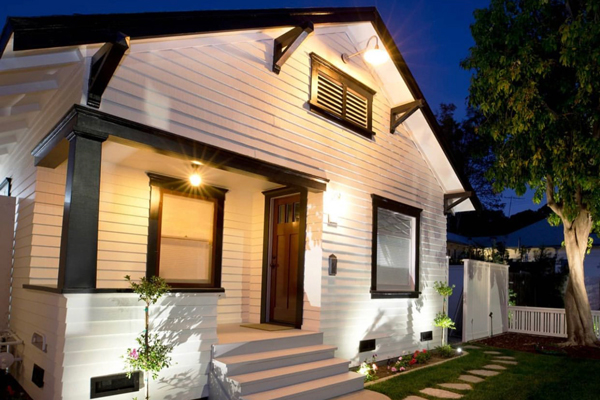
Once I read about three books, I started calling in some other folks to help me and regrouped as an owner-builder and took off from there. The worst thing in my life was trying to convince myself that I was an owner-builder. The best thing in my life was making a difficult decision and getting rid of somebody that was not working out for me. For the past years, I have been an owner-builder.
Were you doing all of the work yourself, like framing and carpentry or contracting it out?
I’m a professional finger-pointer. I have a team of guys, a great crew that specializes in historic home restorations. I’m the person who finds the projects and figures out a way to pay for the projects. As a team, we collectively restore and rebuild historic homes.
How do you find them?
One of the most important things you can do is network with real estate professionals because the real estate professionals are the key to bringing you the deals. As many times as you want to drive around the city looking for real estate signs, that’s not where you’re going to get the best deal. Even in this market, there are not too many deals that are out there. The most important thing is to latch on to the heartbeat of the marketplace.
The person or people who have the heartbeat are real estate professionals. They know when the homes are going to be hitting the market and when people are thinking about moving. That’s where you want to carve out and spend some time learning who those top agents are, creating a relationship, and explaining to them, “I’m looking to get into this market. I want to buy this. If something comes up, please keep me in mind.” Cast that net wide.
Talk to more than one.
There’s a delicate balance because every realtor wants you to think that you’re their sole client and vice versa. In reality, they have multiple buyers. As long as you’re honest and fair with people and say, “I’m looking to buy a home here. I’d like to use you. If you find a three-bedroom and two-bath that meets the following criteria, I would love to be added to your email blast list.” Most of them are receptive to doing that. They want to sell homes. The other point that I would make is always to ask your real estate professional, “How good are you at creating sales?”
They’re going to look at you and say, “What do you mean by that?” By that, I mean are they willing to write cold call letters and say, “I have a buyer who matches the profile of your property. If I could convince them to buy your property, are you willing to sell it?” It’s not just finding the real estate professional that sticks a sign in the ground and markets the property that way through the MLS. You want somebody that’s going to work on your behalf, carve out a sale, and find you the sale.
I got a letter like that. I thought it was fake but I called them anyway. They called me back, I called them back, and that was it. They didn’t want to buy my house after all.
There’s a pretty high proportion, especially in a market where there are few listings. At least 50% of them are agents trolling for listings. It comes back to the authenticity and the general feeling good about working with somebody and expressing to them that you’re serious. Your financing is in place and you’re ready to pull the trigger. It’s a lot different than going to an agent and saying, “If you put me on your blast list, let’s hope that you find something and I hope that I qualify.” The takeaway is to remove the hope, be serious, find somebody who is equally as serious to represent you and make sure that they can carve out and feel comfortable in creating sales.
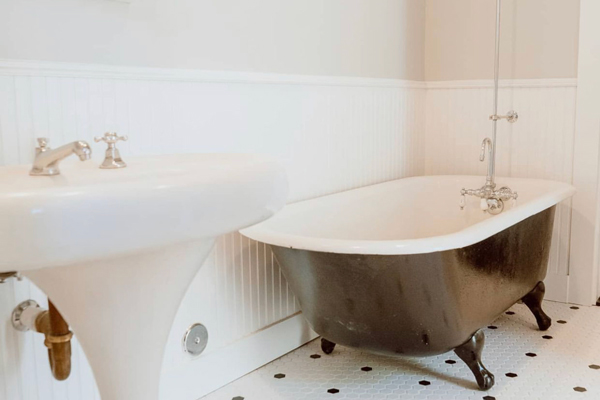
Is there a way that you fund these that are non-traditional or is it the usual?
It seems like everything I do is non-traditional. As an example, years ago, there were properties that came on the market. It was a block of homes that came on the market in the area where I restore the homes. The listing said, “Must buy the whole block. Must have cash.” The deal has to be put together with cash. I had $3,200 in the bank and I said, “This is honestly a once in a lifetime opportunity. How can we make this work?” I called my realtor and said, “This is a fantastic opportunity. Can we work together? Can you put together an offer?” “Let’s make it happen.” Me and 23 other folks put in offers. It was narrowed down to one other person and me. Keep in mind the caveat was you had to have cash. I have $3,200 in the bank.
That’s probably not what it cost.
Most people can either sense or feel if it’s not a good situation. If it feels like it’s not a good situation, pull the plug.
I was about $1.6 million short. My realtor comes back and says, “The real estate team that has the listing likes some of your other projects and what you have done in Towne. If all things come in equal or hopefully greater for us, they will do the deal with you.” They’re coming back to one other party with the best and final offer situation and us. He says, “How bad do you want it?” I said, “I want it bad.” We cranked up the offer way over the asking price and ended up getting it. The next day, my realtor calls me and says, “We got the deal. I need $40,000 to put into escrow for a security deposit.” I said, “I don’t have that money.” There were a few expletives that were screamed at me.
He said, “How do you think you’re going to do this?” I said, “It’s not how I’m going to do this. You’re going to have to find us a hard moneylender,” which essentially is a loan shark. We went the difficult route, got the hard moneylenders in place, qualified, ultimately closed the deal in 30 days, which was the other requirement, and the rest is history. At that point, I had a block of homes that were dilapidated and were in need of quite a bit of love and restoration. That’s when we started that project that took three and a half years to complete. It turned out to be a fantastic and beautiful historic row of houses out here in Southern California.
The loan sharks are no longer in your life, I assume.
The loan sharks had to be in my life for one year. That was a condition of the loan. The going rate at the time was about 4% and I was paying about 10% until I could get the property stabilized and get it to where it was starting to make money. I could go to more of a traditional lending situation, extinguish the hard moneylenders, get conventional financing in place, and breathe a very serious breath of relief after that.
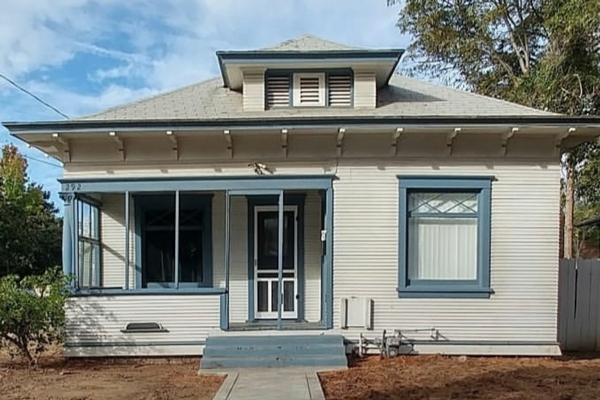
I was involved once with some sketchy financing. I was very happy to get rid of that. Do you have advice for restoring old houses versus renovating newer houses? Is it different?
It’s different on a lot of fronts. In terms of the historic house, it starts with the personnel that you need to restore a historic home. There are a lot of people who can restore homes. There are a few people who can restore historic homes. The hardest thing is building that team. After you have identified the list of things that are going to need to be done, restored, replaced, and rebuilt, the most important thing you can do is build a team or hire individuals who have significant experience doing what you want them to do. That means handymen are not going to be the first person that you call to work on a historic home.
That means people that haven’t worked in the trades doing things like replacing knob-and-tube wiring, and oftentimes even a conventional and modern electrician will come out. They will look at this and say, “What is this?” There are a number of things. A drywall person who does great work in a traditional house out here looks at a historic house in the area where I work and says, “What are these little slats? What is this? Is this plaster? This isn’t drywall.” Part of it is finding the right person for the right job at the right time and the right price.
That’s not easy. How do you find the people?
A lot of the work has been done for at least people out here in our area. As an example, The Preservation Association, which I’m a part of, has a list of tradespeople. It’s an incredibly good list to have at your fingertips. It should be promoted more. Once a tradesperson gets on that list, they have been vetted and worked in a historic area. That’s the good news. The bad news is that if they’re on that list, they’re busy because they’re good.
Speaking of being busy, how long would you expect that to take? If you’re contracting your project and you don’t have a lot of repeat work for these people, wouldn’t it end up being a little harder to get people to come work on your project?
Yes and no. A lot of it depends on your attitude, the project, and the tradesperson’s willingness to work on a particular project. Ultimately, it’s a matter of whether it’s working on a new home, a renovation, or a historic home, you have to mesh with the tradesperson and the architect. There has to be a degree of confidence that he or she is going to do what they’re going to do and you’re going to likewise do what you’re going to do as well. Most people can either sense or feel if it’s not a good situation. If it feels like it’s not a good situation, pull the plug.
When you say attitude, what do you mean by that? How would you define having a good attitude?
As an example, if I’m hiring a tradesperson, I want to see some enthusiasm and somebody who is interested truly in doing your project. It’s a vibe. Part of it is you’re going to know it sooner rather than later. If you get somebody out there who’s giving you a bid, it feels like it’s pulling teeth either to get them out to give you the bid, and you don’t feel like there’s a connection with them as it relates to when they’re walking the property looking at things, it’s not a good fit.
If you get communication that takes a long time to receive after you have been promised that you will have it in the morning and one of the first things they do is they don’t have it to you in the morning but two weeks later, they call you back and say, “I forgot. I need to get that to you,” it’s not a good fit. Listen to your gut very much so early on and don’t talk yourself out of it because ultimately, if you think it’s going to be an issue tomorrow, cut it today.
I agree about the whole listening to your gut thing. Even if it’s inconvenient, sometimes it’s the only person who’s even shown up but if it’s not going to work, you will find somebody else. I had this little mansard-roofed Victorian house, my husband and I did. We wanted to move the bathroom but I didn’t want to take up the wide plank floors that were up there. I wanted to access the plumbing from the first floor through the plaster, which is easy to replace. I was telling the plumber what I thought we could do there. He said, “Lady, you would be a nightmare to work with.” I took that to mean that he didn’t want to work with me, so he didn’t get the job.
That’s a not-so-subtle cue.
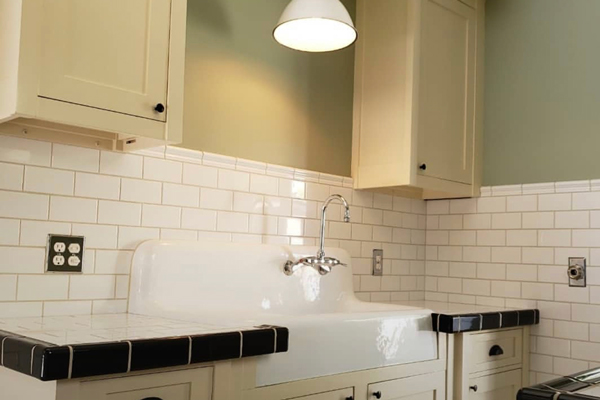
I picked up on it. That was a hit.
Part of it is when somebody comes to your house, that’s your kingdom and you have to look at the cues. Did they ask you to take off their shoes? Did they come barging in with dirty work boots? Little cues like that where you go, “That’s not a little cue.” If he’s coming to my house on day one and we haven’t even started a relationship, it’s not a good sign. It’s things like that. Don’t discount the little things.
What is your secret to restoring these? Do you do a 100% restoration or try to approximate things? What’s your method?
The method to the madness is to take what I typically say a tired rundown home that has a bit of a funk to it and to turn that into something cool and will get people excited not only with renting and living in one of these homes. To me, the ultimate success is that once somebody lives in these homes who have never lived in a historic home goes out and buys a historic home. To me, that’s the holy grail. How do you do that? It’s much easier said than done.
Listen to your gut early on and don’t talk yourself out of it because ultimately, if you think it’s going to be an issue tomorrow, cut it today.
Essentially, every home has its unique peculiarities. The project has its weird things going on with it. We try to do things as historically accurate as possible but include the modern creature comforts. As an example, if it has lath and plaster and it hasn’t already been taken out, then we go back with lath and plaster. All of the light fixtures are period-correct light fixtures from the ‘10s and ‘20s. As it relates to bathtubs, I not only try to find unrestored and unmolested clawfoot tubs but in the little cottages that I do, I try to find apartment-sized clawfoot tubs, which are 4 foot.
When somebody wanted to renovate in the ‘30s, ‘40s, or ‘50s, they were the first thing that got chucked into the dumpster. I spend a lot of time on eBay and with pickers who call me all the time saying, “I found 5 bathtubs and 5 toilets. Are you interested?” Most of the time, they’re pretty destroyed but every now and then you get a good phone call and that’s where a lot of that stuff comes from.
Is that where you find the lighting fixtures as well? Are they reproductions or authentic?
There’s no reproduction light fixture in any house that I have restored. I want the authentic. There’s something about an old fixture that has been cast, whether it’s cast iron, brass, or aluminum. You cannot even begin to replicate the coolness of an old light fixture from the ‘10s, ‘20s, or ‘30s. Oddly enough, most of them don’t cost or cost on par with a decent light fixture of today.
If you’re looking at it and saying, “I’m going to spend X number of dollars on a new fixture,” I look at it as, “Why wouldn’t you buy something original to put in a historic home?” That’s one of the things, in my opinion, that sets a true historic restoration apart, especially as it relates to rental properties, which is what I have. The light separates a top-tier from a mid-pack restoration.
Besides eBay, where else could you find that thing, Architectural Salvage?
Architectural Salvage is a good place. Although when you go to buy, you’re competing with designers who typically have deep pockets because they walk in with a checkbook and say, “My buyer or client wants three of these light fixtures. Do you have them? If you do, who cares about the price?” Architectural Salvage is a good starting point but I also like to scour Craigslist and eBay. I have lighting people on speed dial.
Every cool light fixture comes from somewhere other than California. We throw away our history and don’t keep it. Anything cool comes from East where you are and certainly the Midwest. If you’re looking for industrial lighting, Wisconsin is the place. It’s creating relationships with these people. If you’re on Instagram and Facebook, there’s no shortage of places where you can find these folks.
In California, I went to graduate school out there and it’s not known for its adherence to history. It felt like things were getting torn down and rebuilt all the time out there, at least where I was.
That’s 100% accurate. There is an area of Southern California. It happens to be the area where I do my work. There are a few pockets. Old Towne Orange happens to be the largest district of historic homes West of the Mississippi. There is a Federal, state, county, and city-protected area of 1,400 homes that are nestled within a 1-mile radius. That is Old Towne Orange and it is Americana as only Norman Rockwell could paint.
I’m sorry I missed it when I was out there. If I ever get back, I will have to go see it. When you say a house that has a funk to it, do you mean that it’s funky in a cool way or that it smells bad so nobody else wants it? What do you mean by that?
It could be any or all of the above. Usually, I call it grandma’s funk. Grandma’s funk can mean anything from the decor. You walk in and it’s a house that’s super dark, filled with doilies and dust. On the flip side, there is the funk of the house that has fallen off the foundation. It’s funky and weird. I bought a property where the tenant had to put their bed in the opposite direction of where they wanted to put it because the house had fallen off the foundation. When they had their bed the other way, their blood ran to their head and they kept getting a headache. That’s the funkiness that I tend to gravitate to or it gravitates toward me and finds me.
I also gravitate toward that. When I’m looking for a new house, the more dilapidated, the better for me, I feel like it’s waiting for me to fix it.
The worse the home, the better the opportunity. I truly believe it. If you’ve got the stomach and the team to pull it off, it’s fun to do. If you can get past the hoops and hurdles and get it done, it’s cool to get it to where somebody moves in, you hand them the key, and it’s this beautiful home.
It’s my favorite thing to bring a house back to life like that. Those are my favorite projects for sure because I feel like the house has given another 100 years to be itself and the houses seem happier.
I tell my crew, “If it’s good for the tenant, the neighbors, and the neighborhood, ultimately, we will all get rewarded.” If we focus on the tenant, the house, and improving the neighborhood, we’re all going to succeed because they’re going to keep getting jobs. People see these beautiful projects that get done and tenants are going to tell their friends, “If another vacancy comes up, I will let you know.” Ultimately, it’s a win-win for everybody. That’s what I try to focus on as opposed to looking at a spreadsheet and saying, “If we do this and this, we will make this amount of money.” I don’t work that way.
That’s not as much fun as making people happy and making a neighborhood better. What tips or advice do you have for people who might be tackling their first historic home?
You’re going to need to get a good home inspector. A home inspector that is good for a modern era house may or may not be as solid and good as somebody who specializes or at least has done a number of historic homes as it relates to inspections. Before you even tackle the first project, make sure the person who has done your home inspection is spot on and experienced. What that will provide you is a punch list for which you can then embark on your journey to restore and renovate that house.
The first thing is going to be the infrastructure issues. Is the foundation solid, first things first? Is the electrical in good shape? Is the knob-and-tube outdated, in bad shape, and chewed by rats? Has it been updated with the newer electrical panel? Is the plumbing in good shape? Is the cast iron leaking? Is it now galvanized? Has it been bastardized over the past 30 years? When you embark on it, you’re going to have to look at that punch list and say, “What’s the highest priority?” Infrastructure is number one, not the granite countertops or the stainless steel. Get the infrastructure in line, figure out how far your budget is going to take you, and then tackle it one by one.
I like to call all those things the root canals of architecture. You have to do them but nobody wants to spend money on them.
Every home has its unique peculiarities. The project has its own weird things going on with it. We try to do things as historically accurate as possible but include the modern creature comforts.
It’s painful but necessary. The most important thing is I would go back to trust your judgment. I’m not trying to flog or make a bad situation into something worse but I will never forget how difficult it was to fire somebody who you thought had your best interests at heart. It was the toughest decision that turned into the best decision. Between the tough decision and the best decision was a lot of head shaking, hand wringing, and, “Can I pull this off?”
Once you get past that point of being able to gain that confidence to know, you could do this and pull this off. It’s not going to be easy but you can do it. Everything falls into place. Don’t give up on your goal and dream. Don’t change. Don’t assume somebody is going to buy into your dream and vision just because you’re writing them a check. If they don’t buy into it from day one, they’re done.
What do you have going on? What’s your next project?
I’m looking at a few projects. I have one that’s in the pipeline with the city. It would be a small cottage build and a brand-new build from the ground up made to look 120 years old. The challenge is there. It would be located here in the Historic District. To take a brand-new house and drop it into a place called Old Towne in itself is a little bit of a challenge. It gets people a little more than a little nervous. It will blend into the neighborhood and you will not be able to tell the difference when it gets done. That’s the challenge.
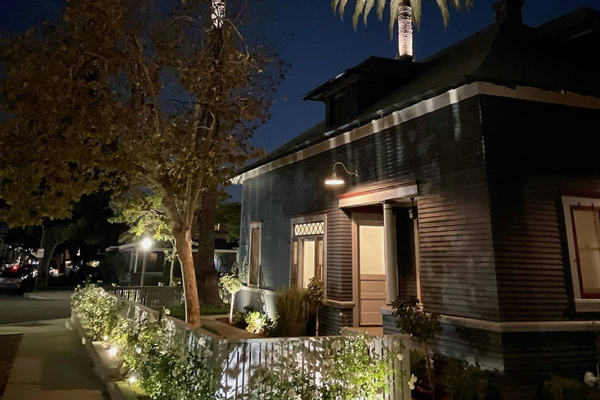
Some preservationists or at least whenever I was taking preservation classes, there was one school of thought that said that anything new should look new, so people don’t get confused about what’s new and what’s old. Do you ever talk about that?
Yes. If it’s a new build and it’s nestled right next door on each side to something old, I want to see old-looking that pays homage and respect to the old. I understand why some people would want to defer to something a little bit more modern to call attention to the fact that it isn’t an original. You also have the fact that it sticks out. Is the goal for it to blend into the neighborhood?
Is it to call attention to the fact that it’s not new but it has been newly built? I’m old school. I want it to look old but I want it to have all of the creature comforts. It needs to be insulated properly, earthquake-retrofitted, and all of that good stuff. In terms of outward appearance and curb appeal, if you pull up, you should not be able to tell the difference between 1905 and 2022.
What do you do with the windows? I’m curious because I often struggle over that with people who have old houses around here. I try to get people to restore the windows rather than throw them away but a lot of people don’t like that.
I’m in your camp, and out here, you cannot change the windows. In the Historic District where I am, they are sacred. Ultimately, what I tell people is to restore your windows and your doors will take you as long as it does to restore the whole outside of your house. To painstakingly take every one of your windows out, casement windows, double-hung, or whatever the case may be, first off, get them out of 100 years of painted wood frames and everything else.
That’s a hallelujah moment doing that. To get them working is step number two and to completely strip, prime, paint, reglaze, and sometimes you have to replace the glass. When you finally get those windows to work, it’s an amazing feeling. It’s painful along the way but it’s necessary to get that look, feel, and authenticity.
My house is from the 1920s, which maybe in California, it’s old. We have our original windows, which were old-growth wood. They’re better-quality windows than what I could buy new at this point. We restored them all.
There’s no doubt they’re better quality and longer-lasting. The only issue is they need to be tuned up and they need some love because over the years, oftentimes, people haven’t afforded it the love that it needed. It’s like an old car. Everything works mechanically so great once it’s given the opportunity to. When it doesn’t work, it’s a miserable situation.
We have to have storm windows out here also, which a lot of people don’t like the look of those.
The fact that anybody is interested in buying a historic home as their first home, they need to be commended. I wish I would have started many years before. The fact that somebody is embarking on buying a historic home, they’re already cool in my book. As it relates to doing the project and work, stick to your vision, talk to a lot of people, go to historic home open houses and tours, talk to as many people, and meet as many craftsmen. One of the biggest tips that I have learned along the way is to go to supply houses, wood material yards, lumberyards, and old-school plumbing places.
The worse the home, the better the opportunity. If you’ve got the stomach and the team to pull it off, it’s fun to do.
Meet those people, find out what they have sitting on the shelves, find out who the top carpenter is for doing finish work, find out who the best craftsman is to do the built-in bookcase that you want, and find the old-school plumber who has been around and knows how to do these things. You will be so surprised at how excited they get to come out and work on your project that you have found them. It’s a little bit of a challenge but once you build the little Rolodex and the contact list, you’re going to be fired up and in good shape.
It’s worth the effort to take the time to build the right team. How can people find you, Hugh?
The best thing to do is to find me or my projects on Instagram or Facebook by searching Historic Home Row and that’s in Old Towne Orange. That’s where we pretty much apply our craft and work. I’m pretty receptive and open. Connecting with people is a good thing. I’m always willing to share advice and help people out. I have made every mistake along the way, so if I can stop people from spending money, wasting their time, and hiring people that aren’t in the best interests of their project, I’m totally willing to help.
Thank you so much for coming on.
Thank you. I appreciate the opportunity.
Important Links:
- National Trust for Historic Preservation
- Old Towne Preservation Association
- Architectural Salvage
- Instagram – Historic Home Row
- Facebook – Historic Home Row
- Episode Enhancements
About Hugh Siler
 Hugh Siler’s innovative historic home restorations have been profiled in numerous local and national publications including the National Trust for Historic Preservation which said this:
Hugh Siler’s innovative historic home restorations have been profiled in numerous local and national publications including the National Trust for Historic Preservation which said this:- Got into restoring homes 11 years ago because his realtor said, “there’s a property that’s been on the market for over a year because it’s in such sad shape and no one wants to touch it – but I think you could make it something pretty special” – this started his love affair with old homes and historic restoration projects
- Hugh is old school – most of his team of talented craftsman have been with him for over 15 years.
- In 2016, Hugh bought a block of homes in Southern California – the listing said, “the homes are being sold AS-IS and for cash only.” Hugh had $3,200 in the bank but he figured out a way to creatively outmaneuver 23 other bidders who actually did have the cash — and the deal closed in 30 days
- Loyalty is huge — Hugh has worked with the same realtor for more than 25 years
- Hugh became an owner builder out of necessity following a negative experience with a general contractor
- His most recent project – taking a 16 X 16 garage that was literally falling down and converting it into a historic tiny cottage, complete with a hidden passageway, was featured in the “Hot Homes” section one of Californian’s largest media outlets. This column typically features homes of the wealthy and famous with price tags starting at $10 million-plus – but Ted’s Garage was more than unique enough to make its way into the column
Really great guy. I’ve seen the work first hand. I compared it to car restoration, where one strips the car to bare elements in order to expose the rust, the bondo and bare metal… and that’s how we met. Watching the historical block come together was a great experience.